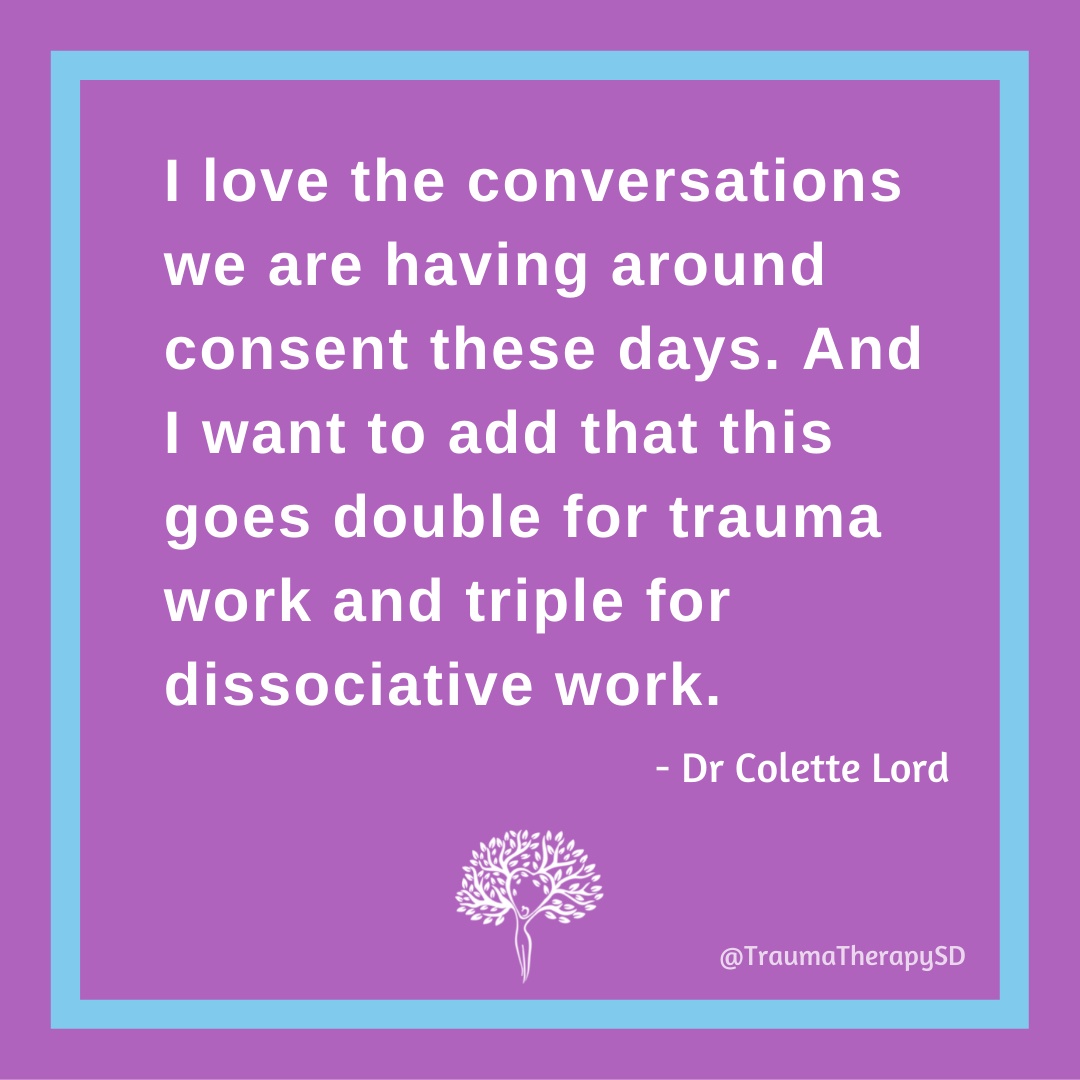Consent in Therapy

There are great conversations and posts happening these days around content – whether its consent in the sexual/dating realm, or not forcing kids to hug someone they don’t want to hug.
We should also be having this conversation about therapy. Informed consent should not just be a form you sign when you first start with a therapist.
We as therapists need to be ensuring on an on-going basis that our clients are consenting to the work that we do and the methods we use.
We should be providing you with information along the way and checking in with our clients about how they think/feel about the information we give, or the suggestions or the interventions.
This is especially important in trauma work, because people who have been traumatized have been through experiences where they had no control over what happened to them, so they need to feel some sense of control or agency in the therapy room.
This is applicable as well to many trans and enby clients who have had their boundaries violated by those in the ‘helping professions,’ so making sure we get permission and most especially explaining why we want to know things or are suggesting certain things is important.
Many people who have been traumatized have had their boundaries violated by others, so it’s important for us as therapists to clarify boundaries and ask permission.
And this is even more important when working with dissociated clients (DID/OSDD) because they often have different parts that feel different ways about the work and therapy in general. That’s normal and perfectly okay, but we need to acknowledge it and try to get consent or come up with a compromise that works for all parts.










